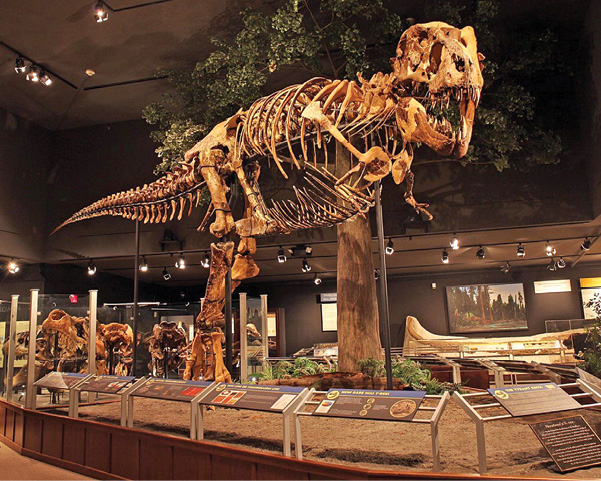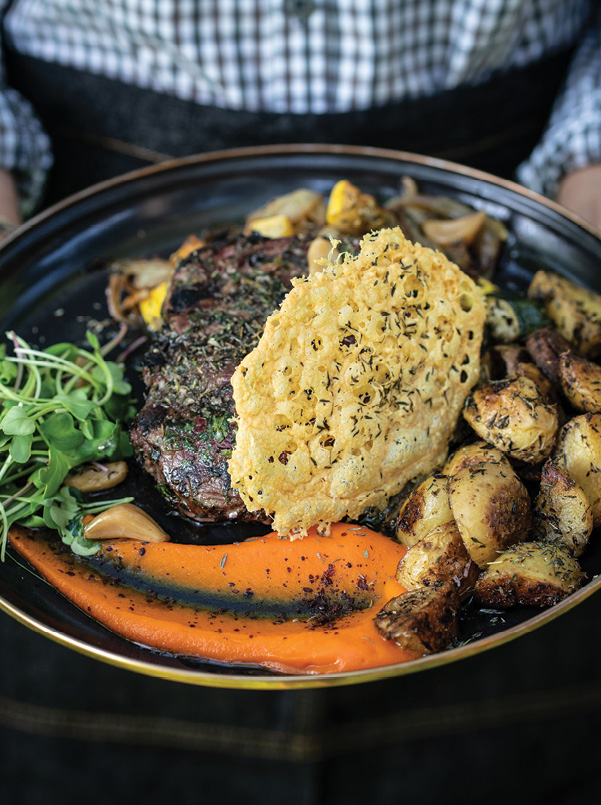Bozeman, Montana
by Casey Hatfield-Chiotti
Photo Chris D’Ardenne
When September rolls around in Bozeman, Montana, less than two hours from the North Entrance to Yellowstone National Park in the Rocky Mountains, the leaves of the valley’s many trees—such as quakings aspens and black cottonwoods—gradually begin to turn, creating a patchwork of gold, burgundy, orange and green along Bozeman Creek and in the canopy above Willson Avenue, a grand street lined with historic homes. When Montana State University is back in session, the summer crowds have gone and the temperatures cool just enough to go hiking in the afternoon sun. Locals know this is the sweet spot when things slow down.
Frontiersman John Bozeman founded the town in 1864. It began as a supply hub for prospectors looking to make their fortunes. Downtown is centered around the Main Street Historic District, and while it has evolved into a modern and lively business district, it’s not hard to imagine horse-drawn wagons trotting down the wide street lined with two-story brick buildings with pressed metal cornices. Of the 68 buildings in the district, 49 are considered architecturally significant, including the Romanesque-inspired Bozeman Hotel and the Art Deco and terracotta Baxter building. Both were built after 1900, adding a dose of grandeur that visitors still experience today.
Sophisticated Stays
Photo Courtesy of the Lark Hotel
Bozeman’s only luxury hotel, Kimpton Armory Hotel, is in another heritage structure a block north of Main Street. The landmark National Guard Armory, where volunteer units once stored weapons and trained, now houses modern mountain guest rooms with hand-stitched leather headboards and luxury amenities such as a rooftop pool and a concert hall. At another downtown hotel option, The LARK’s lobby feels like an outdoor living room—the indoor spaces open onto a covered patio with an outdoor fireplace overlooking Main Street. Guest rooms have custom artwork by local artists, wood accents and large windows.
Hungry travelers can walk down the street to Blackbird Kitchen in a historic bank building for bubbling pizzas and excellent pasta for dinner. The rigatoni with tomato cream sauce, a dollop of stracciatella and a sprinkling of basil has just the right amount of spice. The restaurant’s open kitchen, showcasing a brick wood-fired oven and long countertops where chefs make pasta such as plump ravioli—feels convivial and warm on a brisk Bozeman night.
Explore Other Neighborhoods
While downtown may be Bozeman’s heart, there are more and more reasons to go farther afield to eat and drink. The Brewery Historic District is yet another Bozeman neighborhood with an interesting story. An industrious family of German immigrants built a brewery in the neighborhood north of downtown in the late 1800s. While the city decided to demolish the brewing complex due to safety concerns, the current industrial buildings filled with beer-tasting rooms, art galleries and coffee shops pay homage to the neighborhood’s roots. At the bakery, Wild Crumb, a talented team of pastry chefs and bread bakers create crackling loaves, pies, cakes, tarts and creative croissants daily. Just northwest in another industrial neighborhood, the Devil’s Toboggan is a speakeasy-style cocktail bar in a restored factory building. Cocktail connoisseurs feel more like they’re in New York than the mountains once they slip past the unassuming door on the second floor that leads to a narrow space with high-backed chairs and vintage light fixtures.
Bozeman may not be where travelers expect to find a museum on par with the great cultural attractions in places such as New York City and Washington D.C., but the Smithsonian-affiliated Museum of the Rockies next to the University’s Bobcat Stadium is world-class and should be on any Bozeman travel itinerary. The museum boasts a vast collection of North American dinosaur fossils, including one of the only mounted Tyrannosaurus rex skeletons in the United States, known as Montana’s T.rex. The museum also has a planetarium and a Children’s Discovery Center with an immersive exhibit about Yellowstone National Park. The Montana State University campus next door has streets and open spaces lined with oak, maple and aspen trees and is a picturesque place to stroll in the fall.


Wildlife and the Outdoors
Photo Courtesy Georgia Evans
Majestic golden eagles and other raptors migrate near Bozeman every year. Each fall, experts and volunteers count the number of raptors at the Bridger Bowl ski area in the Gallatin National Forest. The long-term study has been going on since the early ’90s and helps monitor environmental changes and the health of the raptor population. The annual Bridger Raptor Festival takes place at the ski area north of Bozeman on October 7 and 8 to celebrate the birds. The event has nature walks and talks, other educational activities, plus plenty of raptor viewing.
Surrounded by mountain peaks and wilderness areas, Bozeman is a gateway to outdoor adventures such as hiking, mountain biking, fly fishing, and horseback riding. Just south of Bozeman, Hyalite Canyon has beautiful hiking and trail running. The out-and-back Hyalite Creek Trail goes to Hyalite Lake and has waterfalls scattered throughout the U-shaped canyon. Motorists can also admire the fall foliage on a scenic drive along Hyalite Reservoir.
Against the Gallatin Mountains, about 20 minutes from downtown Bozeman, Bodhi Farms immerses guests in nature. The boutique hotel’s permaculture farm supplies ingredients for its Field Kitchen Restaurant. Meals feel more like communal get-togethers than formal dining experiences with tables beneath a wooden pergola. Guests, who can book the property’s nine glamping tipis through the end of October, can get a massage while listening to the soothing sound of the water, warm up in the wood-fired sauna and fly fish in the golden light on Cottonwood Creek. The region is known for its world-class fly fishing rivers, such as the Gallatin, Madison and Yellowstone.
The shoulder season may be quieter, but there is still plenty to do. Kick off the fall season at Warrior Taste Fest, a food and beer festival at the Gallatin County Fairgrounds—proceeds go to support veterans—or the final Summer Artwalk, where more than 30 downtown businesses and galleries host art shows and receptions. Both events take place on September 8.

Casey Hatfield-Chiotti is an Oregon-based travel writer and editor with a background in broadcast news. She has covered hotel openings, dining trends and outdoor adventure for The New York Times, Forbes, Travel + Leisure, Sunset, Afar, Marin Living and more.

